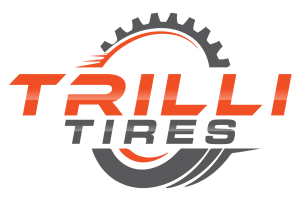Understanding Tire Tread Patterns
Tire tread patterns play a major role in vehicle performance, safety, and overall driving experience. While most drivers focus on brand, price, or seasonal type when buying tires, one essential factor that often gets overlooked is the tread direction. The difference between directional and non-directional tires isn’t just visual—it affects traction, handling, and how the tire wears over time.
What Are Directional Tires?
Directional tires are designed with a tread pattern that works best when rotating in one specific direction. This design typically features a V-shaped or arrow-like pattern pointing in the direction of forward motion. The idea behind this layout is to efficiently channel water away from the tire’s contact patch, reducing the risk of hydroplaning at high speeds or in wet weather.
Because of their singular orientation, these tires need to be mounted in a particular direction. An arrow on the sidewall indicates the correct rotation. If installed incorrectly, the performance benefits are lost and can even become a hazard.
Benefits of Directional Tread
Directional treads excel in high-speed and wet driving conditions. Their ability to push water out from under the tire helps maintain traction on rain-slick roads. This design also provides better straight-line acceleration and cornering grip, especially in sports cars or performance vehicles. During winter, their aggressive design can also be advantageous in slushy or snowy conditions.
Another often-overlooked benefit is improved heat dissipation. The directional flow of the tread allows better airflow around the tire, which helps keep temperatures down during extended drives.
Limitations of Directional Tires
Despite their many advantages, directional tires do come with limitations. One of the most notable is the restriction in rotation patterns. Because they’re designed to spin in only one direction, you can’t simply rotate them side to side like you can with non-directional tires. You’re limited to front-to-back rotations unless the tires are dismounted and remounted—an additional cost and hassle for many drivers.
Directional treads may also be noisier than other types due to their aggressive pattern. And in dry conditions where water dispersion isn’t necessary, their benefits might not be as noticeable compared to other designs.
What Are Non-Directional Tires?
Non-directional tires feature a tread pattern that allows them to be mounted on any wheel position without affecting performance. Their design is symmetrical or asymmetrical in a way that doesn’t rely on rotational direction. This means the tire can rotate clockwise or counterclockwise and still perform consistently.
The flexibility of installation and rotation makes non-directional tires a favorite among everyday drivers who value longevity and low maintenance.
Benefits of Non-Directional Tires
One of the biggest advantages of non-directional tires is the freedom to rotate them in various patterns. Front-to-back, side-to-side, or diagonal—any configuration works. This leads to even tread wear across all four tires and helps extend their lifespan.
They are also generally quieter and offer a smoother ride compared to directional types. For sedans, crossovers, and SUVs used primarily for commuting or city driving, non-directional tires offer practicality, comfort, and cost-effectiveness.
Limitations of Non-Directional Tires
While they provide versatility and durability, non-directional tires may not offer the same level of performance in extreme weather or high-speed driving. Their water evacuation capabilities are typically less advanced, making them more prone to hydroplaning in heavy rain.
Additionally, they may lack the sharp cornering response or traction required for sports vehicles or performance driving. For drivers in regions with harsh winter conditions, non-directional all-season tires might not provide sufficient grip unless combined with a dedicated winter tire.
Comparing Directional and Non-Directional Tires
Let’s break down the differences further:
1. Mounting and Rotation
- Directional: Must follow a specific rotation direction, limiting rotation options.
- Non-Directional: Can be rotated in multiple patterns for even wear.
2. Wet Weather Performance
- Directional: Excellent at dispersing water and reducing hydroplaning.
- Non-Directional: Adequate but generally less efficient in wet conditions.
3. Tread Life
- Directional: May wear unevenly if not rotated properly.
- Non-Directional: Easier to rotate and maintain even wear.
4. Driving Experience
- Directional: Ideal for performance-focused driving.
- Non-Directional: Best for everyday comfort and long-term use.
5. Cost and Convenience
- Directional: Can be more expensive and complex to maintain.
- Non-Directional: Budget-friendly and lower maintenance needs.
How to Tell What Type of Tire You Have
The easiest way to determine if your tires are directional is to look for an arrow on the sidewall indicating a specific rotation direction. The tread pattern itself is also a giveaway—if it forms a V or chevron shape, it’s likely directional. Non-directional tires tend to have repeating symmetrical blocks or patterns that look the same no matter how the tire is rotated.
If you’re unsure, a professional technician at your local tire shop can quickly identify the type for you.
Which Tire Type Should You Choose?
Your choice between directional and non-directional tires should depend on how and where you drive.
Choose directional if you:
- Drive in a region with frequent rain or snow
- Own a high-performance vehicle
- Want superior traction and hydroplaning resistance
Choose non-directional if you:
- Prioritize tire longevity and ease of maintenance
- Do a lot of city or highway driving
- Drive a standard sedan, minivan, or small SUV
Ultimately, both tire types have their own strengths. It’s not a matter of which is better overall but which is better for your specific driving conditions and vehicle.
Final Thoughts
Understanding the difference between directional and non-directional tires empowers you to make a smarter, safer investment in your vehicle. Whether you’re looking for peak performance or long-lasting durability, the right tread pattern makes all the difference.
If you’re in the Richmond Hill area and need expert advice or quality tire installation, TrilliTires is your go-to destination. Contact us today for the best selection and service that keeps you rolling with confidence.
